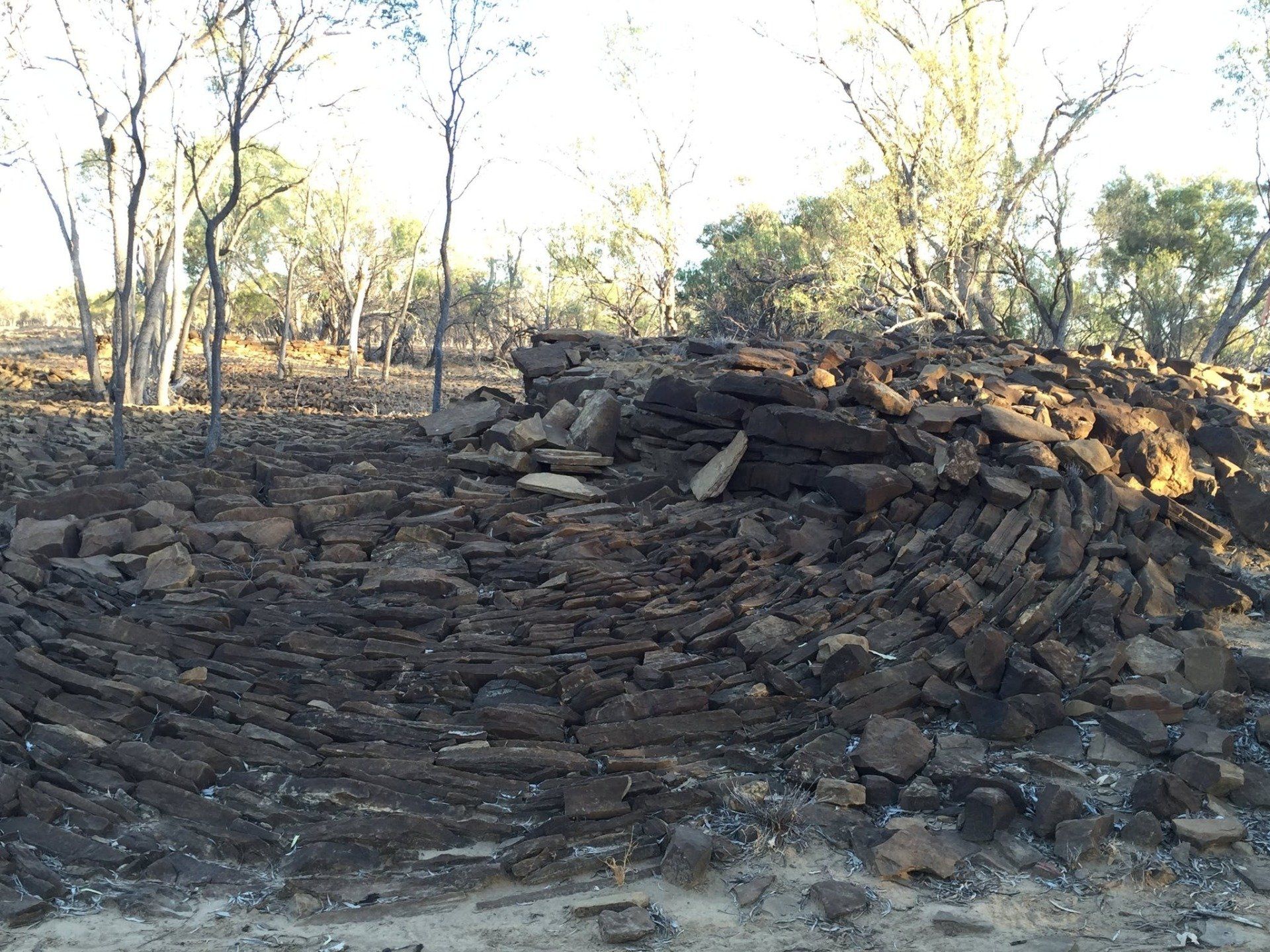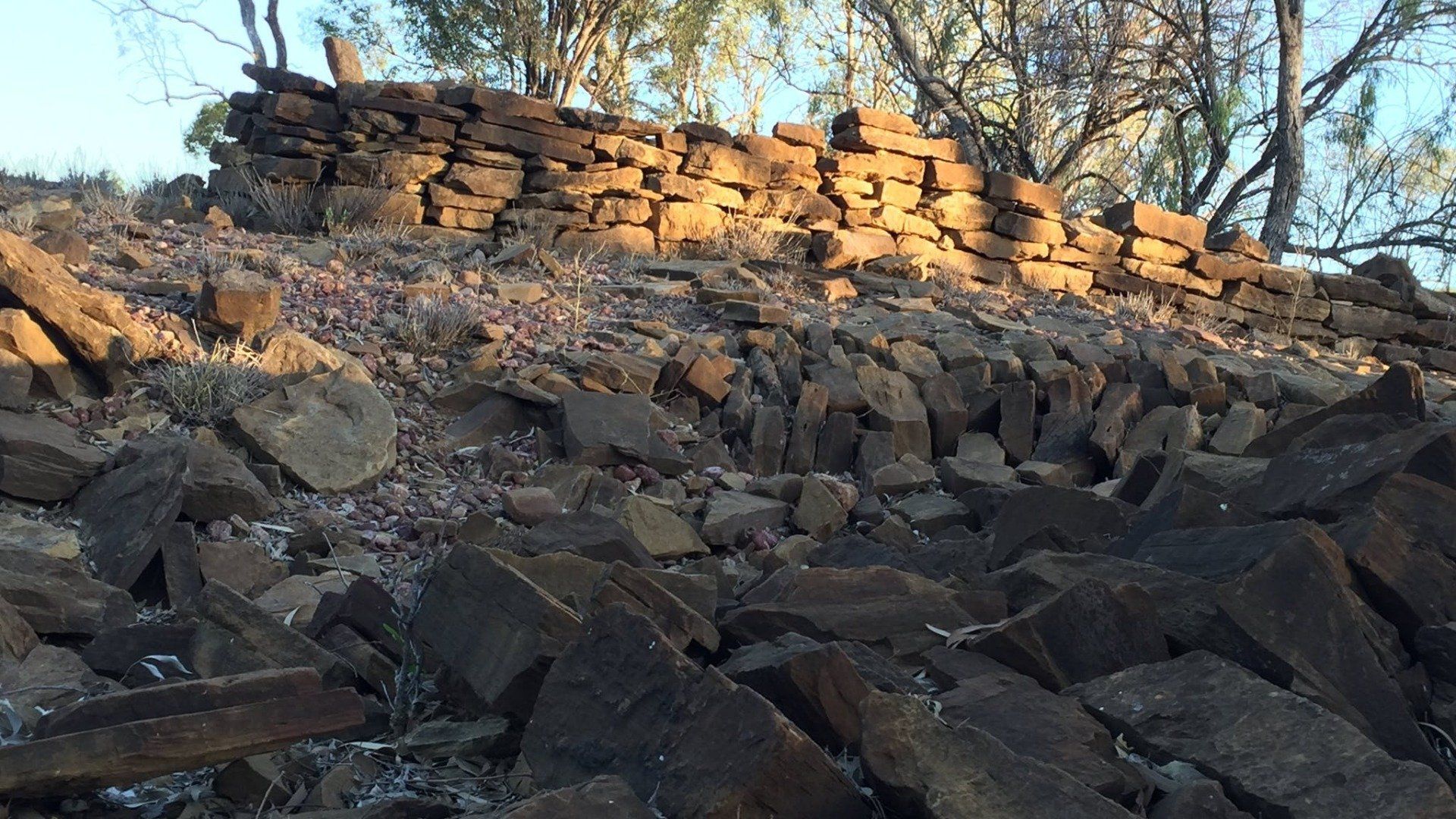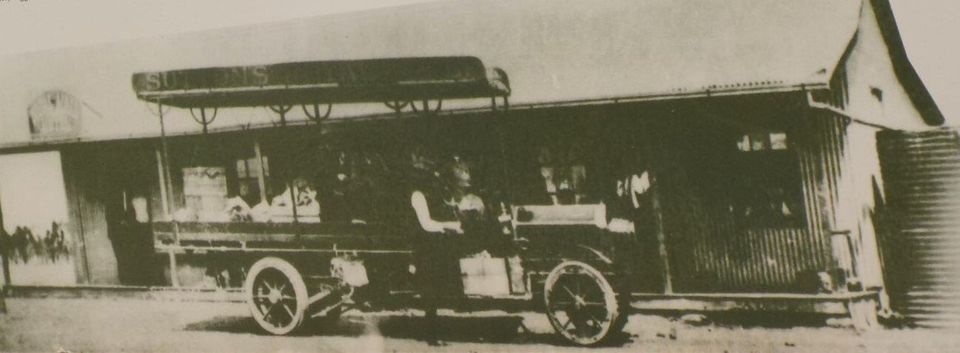The Twelve Mile Dam
How was it made?
Stone was used for construction as one of the oldest building techniques. Australia's inland pioneers had to make do with whatever materials were readily available when they wanted to build anything. They adapted the techniques to dry stone walling which is the use of stones without mortar. This was a system commonly used in Britain to create fences, buildings and water works, surprisingly which still stand erect and solid to this day in most areas.
What is the Twelve Mile Dam?
Located 20 km south of Ilfracombe on the Ilfracombe-Isisford Road (it is on the left just past Stockyard Creek), the Twelve Mile is a rare example of 19th century bush craftsmanship being bent to the unique needs of a harsh environment. It's a reservoir created by selecting and laying thousands of flagstones so that, in an area prone to savage droughts, a leak-proof reservoir was developed. It was built by hand around 1890 and subsequently used as a watering stop for sheep and cattle, a Cobb & Co change station, and it became so important that the Royal Mail Hotel was built to service the drovers and coach drivers. The hotel operated between 1893 and 1916.
"The workers adapted the techniques to dry stone walling which is the use of stones without mortar. This was a system commonly used in Britain to create fences, buildings and water works, surprisingly which still stand erect and solid to this day in most areas.
"The Chinese tradesmen, previously miners before moving to Western Queensland, may have worked on stone construction projects like this one and may have also contributed special skills and techniques.
"The 12 Mile is a splendid example of stone pitching and was constructed to create an erosion proof facing to an embankment, which served as a bye-wash that would retain water to a certain level, causing it to run into, and fill the adjacent dam. Excess water was allowed to flow over the bye-wash, thus relieving pressures that might have washed the dam away.
"Bush builders took great pride in the art of stone pitching as the work required careful planning. Stones had to be gathered, perhaps from far distant locations, and then sorted for the selection process before being strategically placed throughout the construction.
"It is likely that the stone pitching visible at the twelve mile was constructed in 1892 - back in the days when things were constructed to last for many many years. In any event, the stones have remained in place for well over a century - a proud tribute to the skills of the builders."
The Twelve Mile Hotel
In the days before motor transport, this was an important stopping place for all travellers using the road from Ilfracombe to Isisford.
Ilfracombe came into existence from 1890 when the railway from Rockhampton approached. Settlers in the new town immediately pressed for the development of roads to link the town with surrounding districts. In particular, they wanted a road that would bring into Ilfracombe the Isisford trade that had previously gone to the more distant railhead at Barcaldine.
In that era, making roads meant creating artificial water along the road route and perhaps contracting stone pitched crossings over some of the major creeks. Artificial water was essential, otherwise there would be no safe water supply for people or animals for perilously long distances. Without this artificial water supply, roads could not be used for most of the year.
In 1892 the Aramac Divisional Board - the original local authority for the area - selected this place as a site for an earth tank dam. It was a well chosen site, on a good creek catchment and about 20 kms from water at Ilfracombe. This was the distance thought to be a suitable interval for roadside water supplies. Two days travel for drovers, a days travel for teamsters and a few hours for coaches, buggies and riders.
The Twelve Mile Dam was constructed in 1892, 200 metres south of the hotel. It's served travellers and travelling stock ever since. It was also a spot much favoured by Ilfracombe townspeople for picnics and swimming outings.
Cobb & Co began running mail services and passenger coaches from Ilfracombe to Isisford in 1892. Modest hotels were frequently developed along coach routes and were operated by people whose job it was to have fresh horses harnessed read for the coaches, in return for the right to conduct the hotel. This hotel, named the Royal Mail Hotel, becoming better known as the Twelve Mile, was trading by early 1893.
From 1910, coaches were superseded by motor vehicles on the Isisford route. For a time, the hotel survived on the business of passing teamsters and Wellshot shearers, but it appears to have closed sometime around 1916.
All Rights Reserved | General Business Pty Ltd
Email: generalbusiness@bigpond.com
NOTE: this email is for contact regarding the web site design & info only. Enquiries relating to tours, accommodation, dining etc, please contact the providers listed.
Ilfracombe, Queensland 4727










